
On the eve of the Battle of the Philippi, fought in October of the year 42 B.C. against Brutus and Cassius to avenge the murder of Julius Caesar, the young Gaius Octavius, the future emperor Augustus, made a solemn vow that – if victorious – he would build a temple to Mars Ultor (from the Latin Ultor = the Avenger). Octavian was the grandnephew of Julius Caesar (his mother Azia, was the daughter of Caesar’s sister Julia), and from 45 B.C. onwards he became Caesar’s adopted son and heir. Having won the battle and thus avenged Caesar, upon his return to Rome Octavian kept his vow and began the construction of the temple that he wished to erect in a new forum, thus replicating the architectural model created several years before with the Forum of Caesar. The pretext for the construction of another forum was given by the dizzying increase in the number of legal proceedings which meant that just as the Roman Forum had become insufficient, so also was the Forum of Caesar which had been inaugurated shortly before in 46 B.C.
Thus the second of the Imperial Fora was born, the Forum of Augustus.
The Pre-Existing Buildings and their Expropriation
The area chosen for the construction of the new forum was adjacent to the Forum of Caesar to the east, or rather, towards the Suburra. As Julius Caesar had done several years earlier, so Octavian personally purchased the private dwellings that were present on the site with the spoils of the war so that he was free to demolish them and could thus create a space large enough to contain the new complex. He recounts the process in his testament-autobiography (Res Gestae) while the historian Suetonius cites that Octavian so wanted to limit as much as possible the use of expropriation because he considered it a form of violence, that he was forced to create a forum that was a bit confined by its surroundings.
The Plan of the Forum
In reality, the new complex was of imposing dimensions consisting of a total perimeter of approximately 120 x 120 metres and was organized around a rectangular piazza that measured 70 x 50 metres. At the centre of the short, eastern side was the Temple of Mars Ultor while the long sides were occupied with colonnades. Each of these porticoes opened onto two hemicycles, semi-circular areas 40 metres in diameters. Those to the east were used to house the courts (remains are still visible of these structures) and those to the west (that no longer exist) were perhaps used as archives.
The Hall of the Colossus
At the farthest eastern point of the northern portico a colossal statue of the Genius of Augustus was situated in a richly decorated recess, giving the area the modern name of the “Hall of the Colossus”. Remains of the decoration and the statue are housed in the Museum of the Imperial Fora.

The Western Side of the Forum
It is still not known exactly how the short side opposite the Temple and adjacent to the Forum of Caesar was structured. Recent excavations have excluded the existence of a basilica located in the western section of the piazza (a hypothesis that some scholars had advanced in the past) but have been unable to reveal the configuration of this part of the complex. For now, the existence of a third columned portico can be presumed to have existed similar to those of the long sides (as was the case in the Forum of Caesar) or perhaps a simple, although certainly richly decorated wall at the center of which was an arch that served to connect the Forum of Augustus with the Forum of Caesar.
The Great Wall toward the Suburra
On the opposite side, to the east, the situation was (and is) completely different. The entire complex is in fact bound in by a massive wall made of blocks of peperine, gabine and travertine stone, the tallest segment being 33 metres high. Gabine and Peperine stone was considered fireproof: this high wall was constructed to isolate and protect the forum from the Suburra, the neighbourhood just behind it which was over-populated and subject to frequent fires due to the widespread presence of wooden structures there. In this great wall were (and still are) two entrances to the Forum from the Suburra, one was a triple arch to the left of the Temple, the other a monumental arch in travertine to the right, which since the 16th century has been called the Arch of the Pantani (or Quagmires). The great wall against which the Forum of Augustus rests is still today one of the most impressive of the monumental remains of the Imperial Fora. It can be seen from Via dei Fori Imperiali and Via Alessandrina and from behind, along the Via di Tor de’ Conti.

Octavian becomes Emperor Augustus
The construction of the Forum lasted until the year 2 B.C. when it was inaugurated. In the meantime, Octavian had become emperor. He assumed the title of Augustus conferred to him by the Senate on January 16th, 27 B.C., a name that meant literally “he who is worthy or honour and veneration” (but not of worship) but also “he who increases the wealth of his people”. It is with this in mind that the extraordinarily rich ornamentation of the forum should be read.
The Cella of the Temple
The Temple hosted within its walls the colossal statues of Mars and Venus. The goddess was considered the mythical progenitor of the Roman noble family: the Gens Iulia, or Julia. She and Anchises together spawned Aeneas, who himself was the father of Iulus (or Julus) Ascanius, forefather of the family. In this way Augustus did nothing more (or less) than proposing divine origins for the Iulii, just as Julius Caesar had done when he erected the Temple of Venus Genetrix in his own Forum. At the same time, Mars was present not only as the avenger of the death of Caesar but also as the divine progenitor of the Romans in that he was the father of the mythical founder and first King of Rome, Romulus, who was born of Rea Silvia, descendent of Aeneas and Iulus Ascanius. The ancient sources indicate the existence within the temple of a third sculpture, possibility representing the Deified Julius Caesar. An alternative hypothesis suggests instead that a statue was of the Divine Nero, commissioned by the Senate to celebrate his victory over Armenia.
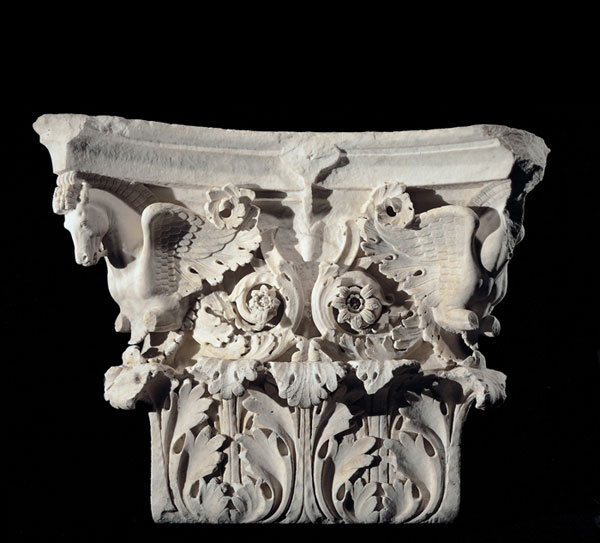
The Pediment of the Temple
The divine origins of the Gens Iulia and, at the same time, of Rome, were exalted in the decorations on the pediment of the temple. Here, at the centre, towered the colossal statue of Mars, presented half-nude as an aggressive God with a lance in his right hand (an allusion to war) and a sheathed sword (an allusion to the end of the war and thus peace) and with his left foot resting on a globe (an allusion to the world and thus dominion over it).

It is quite easy to discern that the figure of Mars could (and should) be read as a clear reference to Augustus himself in the guise of avenger of Caesar, of conqueror of the Empire and peacemaker. To the right of Mars, Venus is depicted with a Cupid on her shoulder as in the statue in the Temple of Venus Genetrix in the Forum of Caesar. Next to Venus is Romulus and the personification of the Palatine Hill, again a reference to Augustus, because it was there that he had decided to live. To the left of Mars there were statues of the Goddess Fortuna, the Dea Roma and the personification of the river Tiber. From the side corners of the pediment, two figures of winged Victory in gilded bronze jetted out. In 1932, the foot of one of these was recovered and is on display at the Museum of the Imperial Fora.
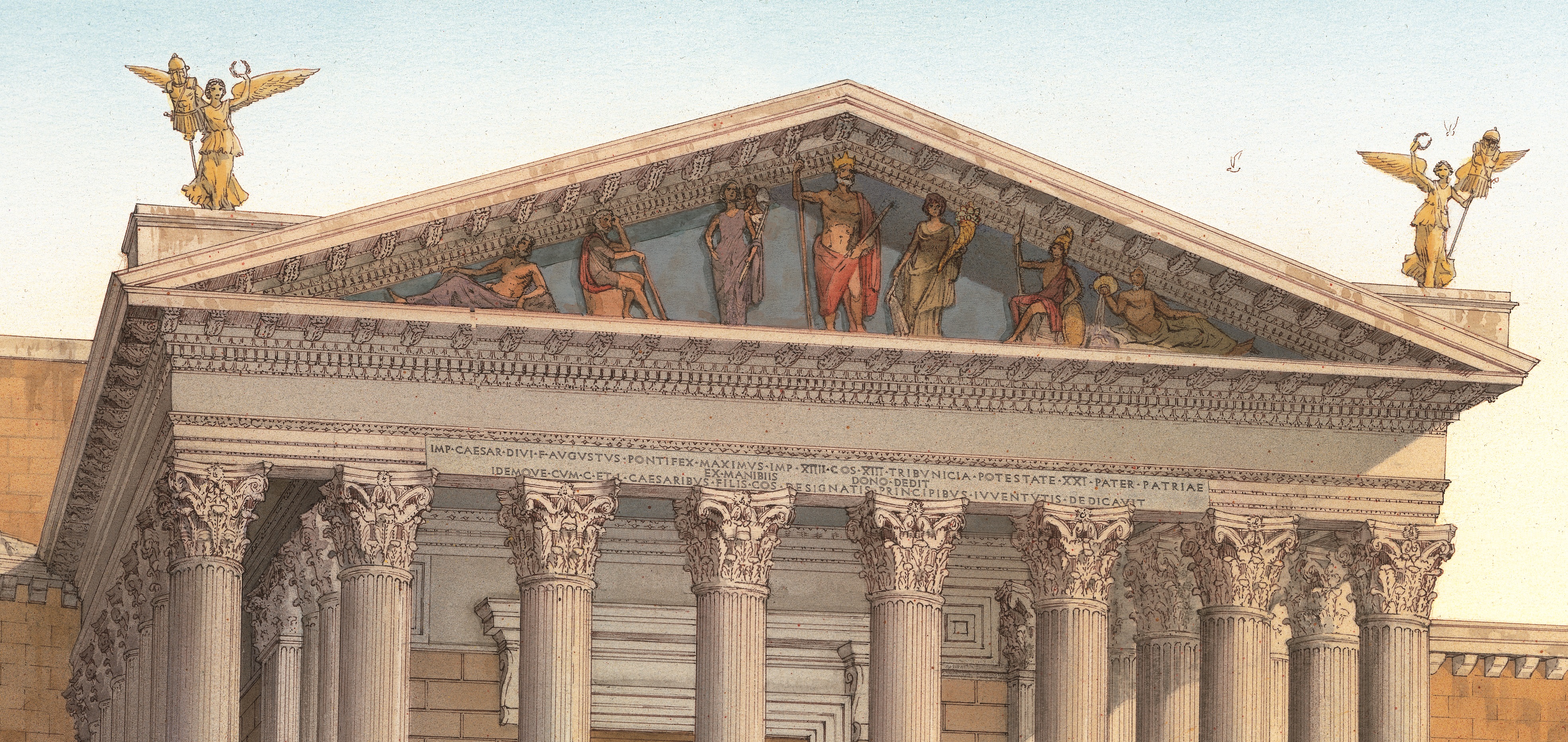
The Porticoes
The facades of the porticoes facing the piazza were characterized by the presence of a high porch, decorated with figures of Caryatids (copies of those from the Erechtheion at the Acropolis in Athens) alternating with shields decorated with the heads of Jupiter Ammon and other divinities. The meaning of these decorations was clear to the Romans of the time – the Caryatids, young women from the region of Caria (today part of south-western Turkey) which had been dominated by the Greeks, symbolized the populations of the Empire that were subjugated to Rome and to Augustus. The same symbolism was applied to the other images of divinities on the shields. The precise reference to Jupiter Ammon, whom Alexander the Great suggested was his own divine ancestor, alluded once again to Augustus’ own divine lineage and at the same time put him on the same level as the celebrated Macedonian conqueror.
The Hemicycles
The use of images to exalt Augustus and his family continued in the semi-circular areas delineated by the porticoes, which were used, as we have already said, as tribunals. In the exedra to the north there were statues of the Kings of Albalonga (an ancient city near Rome) and of the most illustrious members of the Gens Iulia. In a large recess at the centre of the exedra was a group of sculptures that depicted Aeneas escaping from the flames of Troy, leading his son Iulus Ascanius by the hand and carrying his father Anchises on his shoulder.
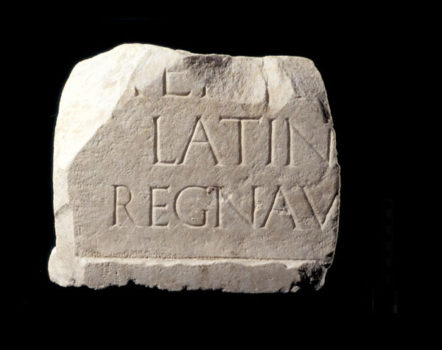
The exedra on the opposite side held statues of illustrious figures in Roman history (summi viri), with inscriptions that recounted their endeavors. In the central niche was a statue of Romulus. Here again the message is clear, the sons of Venus (Aeneas) and Mars (Romulus) forefathers of the Gens Iulia and of the Romans themselves, were placed one in front of the other, in the company of the illustrious members of Augustus’ family (the Gens Iulia) and of the history of Rome, in an unbreakable intertwining of history and myth.
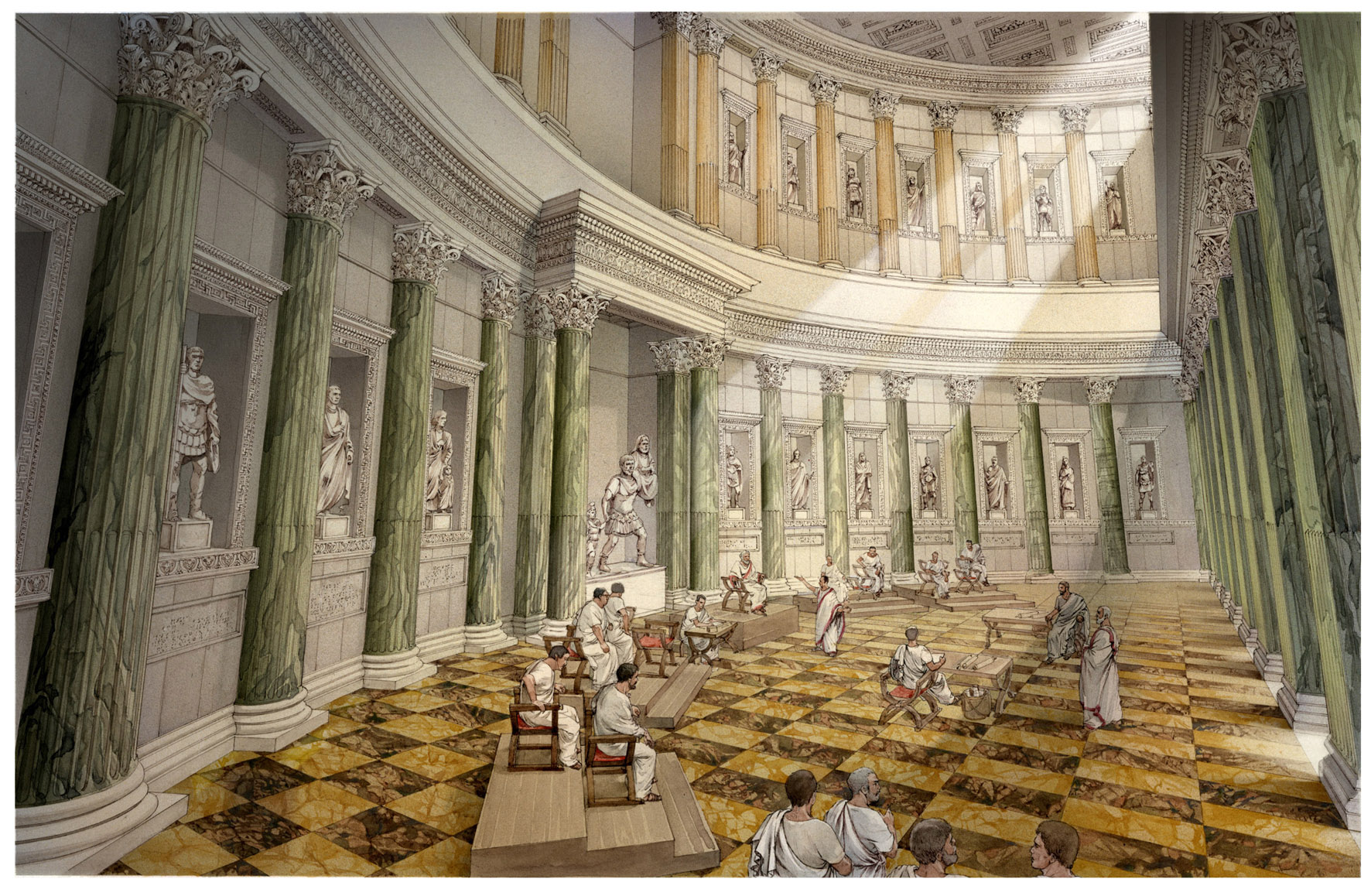
We know nothing of the decoration of the exedras farthest to the west which probably also served for legal proceedings or perhaps as archives to contain the official documents of the intense activity of administering justice which took place in the Forum. This area was destroyed to build the Forum of Nerva (97 A.D.) to the south and for the construction of the Forum of Trajan to the north (112-113 A.D.).
Role and Function of the Forum of Augustus
The Forum of Augustus was an immense tribunal but at the same time also constituted a rich gallery of sculpture depicting mythological and real figures in Roman history, beginning with Aeneas, through the Kings of Albalonga, Romulus and the illustrious men (summi viri), all the way up to the portraits of the Gens Iulia. A common thread that united the Trojan ancestors with Augustus was that they exalted and legitimized the figure of the Emperor.
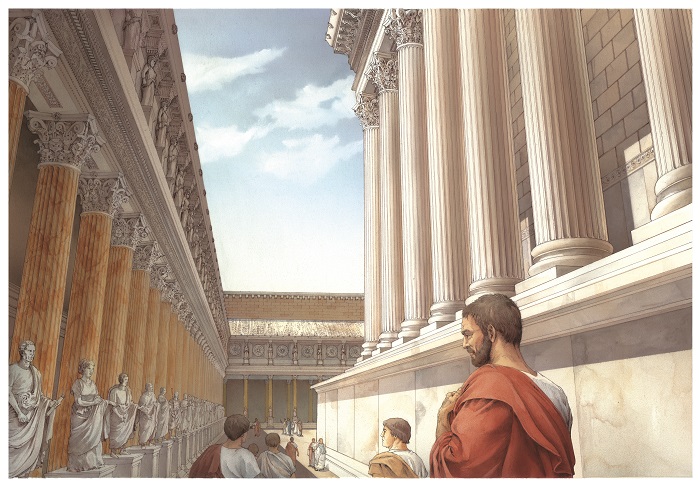
Within the Forum important ceremonies tied to public life were performed. It was here that the Senate deliberated and discussed the making of peace and of war and received the foreign Princes. Magistrates before departing to their assigned provinces would visit the Temple of Mars to make sacrifices, and it was here that victorious generals would lay down their standards and military ensigns or banners. Here also, upon coming of age, the young descendents of the great Roman families registered themselves on the military roles. For Augustus, the Forum represented a sort of military, administrative and political centre of the Empire, and for this motive it came to constitute a model to be copied in the construction of fora in the numerous cities of the Roman world.
